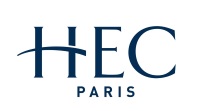No 1085: Incentives, Social Comparison Costs, and the Proximity of Envy's Object
Tomasz Obloj () and Todd Zenger ()
Abstract: The authors investigate the mechanisms that shape social comparison in organizations and generate social comparison costs. Drawing on the notions of inequity aversion and envy, they argue that heterogeneity in the strength and type of incentives provides an impetus for envy, and that the resulting social comparison costs are shaped not only by the magnitude of this impetus, but the distance of envy’s objects. In other words, the more proximate socially, structurally and geographically are those one envies the larger the costly behavioral response. To test our predictions, the authors use a quasi-experimental event during which outlets of a retail bank, previously operating under homogenous incentives, were assigned to four distinct tournament groups with differing ex ante probabilities of winning a prize — an event that provides envy’s impetus. The authors then explore how, for each outlet, the proximity of those assigned to more advantaged outlets — objects of envy — shape productivity responses. They find that organizational units with more socially, geographically, and structurally proximate peers assigned to ‘better’ tournament groups decreased their productivity, when compared to peers whose objects of envy were more socially, geographically, and structurally distant. They also show that these effects are stable over time. They discuss implications of these results for organizational design and boundaries.
Keywords: Incentives; Social Comparison Costs; Envy; Organization Design
30 pages, March 5, 2015
Full text files
papers.cfm?abstract_id=2574248
Questions (including download problems) about the papers in this series should be directed to Antoine Haldemann ()
Report other problems with accessing this service to Sune Karlsson ().
RePEc:ebg:heccah:1085This page generated on 2025-06-10 11:14:55.

